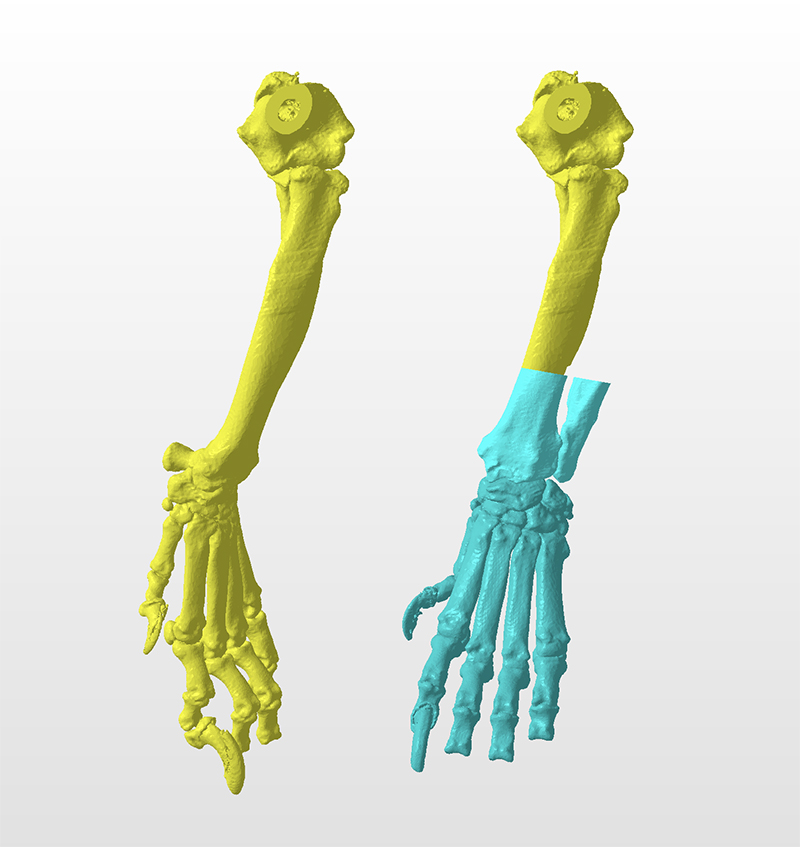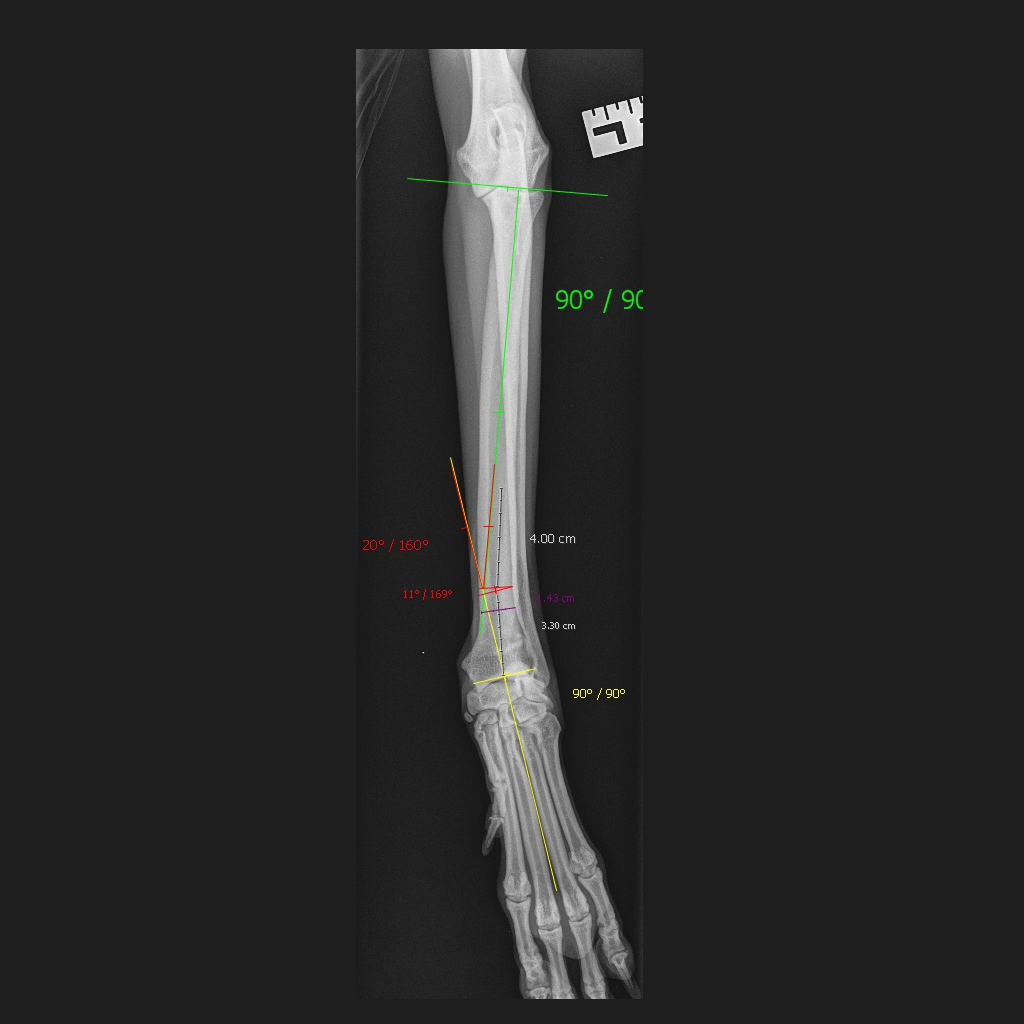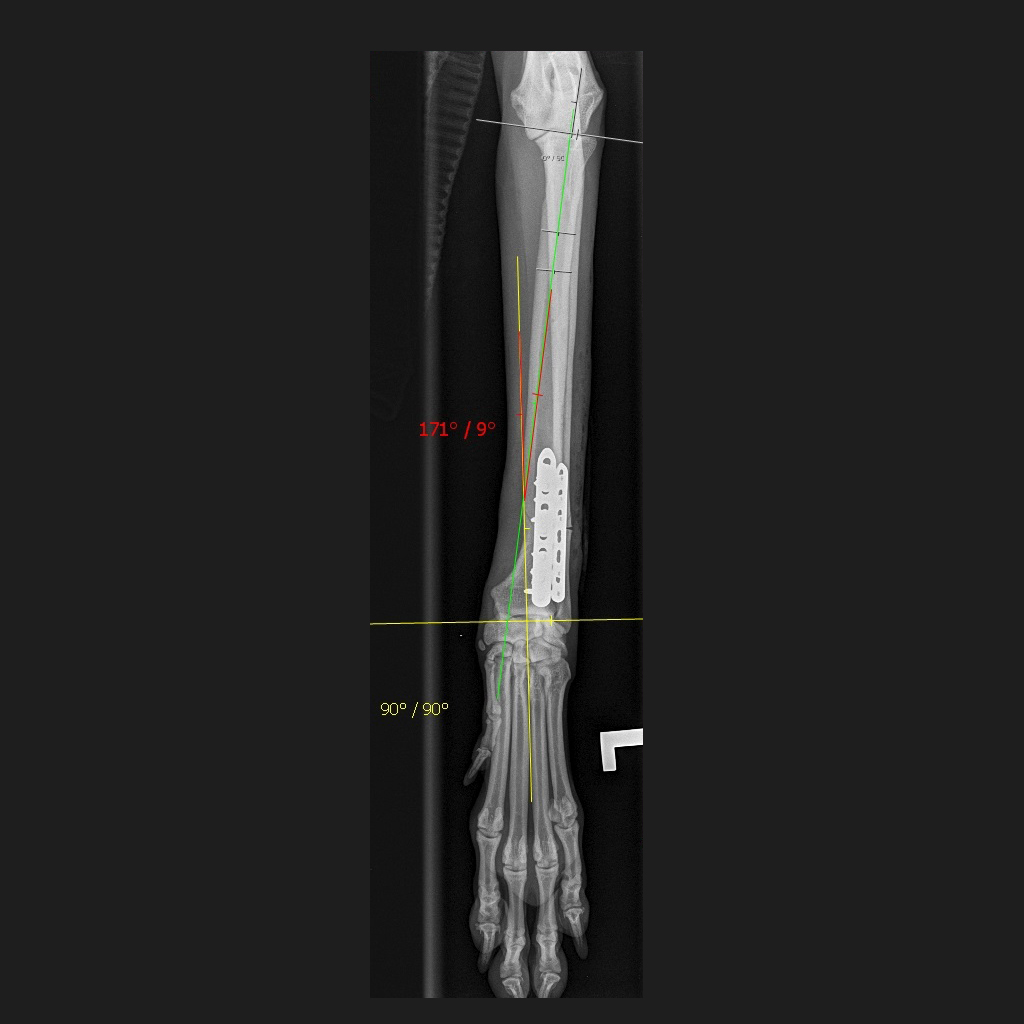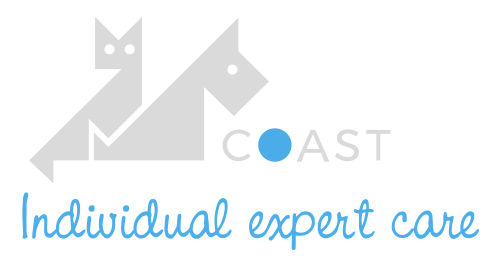How do Bone Deformities occur?
Dogs experience a rapid growth spurt between approximately 4 and 5 months of age; the rate of growth then slows considerably and is mostly complete by 7 months of age. Growth occurs through specialised areas within the bone, and damage to these areas before or during this critical period of growth may cause bone deformity. This can be seen as shortening, twisting, or bending of the bone.
This bone deformity may also impact adjacent joints, resulting in discomfort and lameness. These growth areas may be affected by an injury, by poor nutrition, by abnormal levels of certain hormones, or by genetics.
Limb deformities also occur because of genetic disorders that can impact the entire skeleton. Some of these deformities are considered ‘normal’ in certain breeds and have been selected through breeding, e.g., some small breed dogs will have twisting of their front legs, causing a characteristic ‘Queen Anne’ appearance to the leg. In some individuals, these ‘normal’ characteristics can be exaggerated, and this can result in excessive shortening, twisting, or bending of bones.
Bone deformities can also be seen after fracture healing, where the broken bone has not healed in its original orientation. In some cases, this is well tolerated, but in others it can contribute to ongoing discomfort.
How can bone deformity be investigated?
A careful orthopaedic examination combined with a thorough understanding of the animal’s history are essential to understand the impact of the deformity in an individual animal. This assessment should not be unduly delayed, especially in young animals (less than 7 months of age), since modification of remaining growth may be possible to improve the condition.
If further investigations are needed, then these typically will take the form of radiographs or CT assessments. These investigations are crucial to fully assess the deformity and to help determine if treatment is required.
Treatment of bone deformity
Treatment will only be considered if the deformity is currently, or likely in the future, to cause a problem.
In young animals with growth problems, surgery may be aimed at the active growth areas, seeking to adjust the remaining growth of the bone. In older patients, the bone may need to be realigned, and this will be guided by information from the radiographs or CT assessment.
Complicated cases with 3D deformities of the bone may benefit from CT guided surgery using specially designed templates to fit the bone precisely.
If you have any questions about surgery, then please get in touch.







